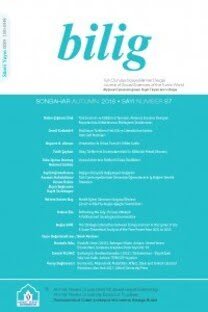Attâr’ın Fütüvvetnâmesi İstanbul’da mı…?
Doğu edebiyatlarının ünlü ve etkili şairlerinden biri olan Feridüddin Attâr, yalnız ardında bıraktığı değerli eserleri ile değil, kendisine aidiyeti şüpheli çok sayıda eserle de araştırmacıları hala meşgul etmektedir. Attâr Fütüvvetnâmesi, ona ait olduğu üzerine bir asra yakın zamandır tartışmalar yürütülen işte bu eserlerden biridir. Türkiye, İran ve Romanya’da bulunan nüs- haların; Harcirdli Hâtifî ve İzzî-i Mervî gibi şairlerin; Said Nefîsî, Franz Taeschner ve Abdülbaki Gölpınarlı gibi önemli bilim insanlarının dahil olduğu, Almanya’dan Pakistan’a uza- nan, geniş soluklu bu tartışmalar, henüz kesin bir sonuca varmış değildir. Bu makalede, İstanbul Üniversitesi Kütüpha- nesi Farsça Yazmalar Bölümü F1288 numarada kayıtlı olan ve anılan araştırmacılar tarafından görülmemiş / değerlendirilmemiş bulunan bir nüshadan hareketle tartışmalara yeni bir boyut kazandırılmaya çalışılmakta ve söz konusu metin, özgün alfabesiyle ilk kez yayınlanmaktadır.
Anahtar Kelimeler:
Klâsik Edebiyat, Fütüvvet, Fütüvvetnâme, Attâr, Ahilik, Yazma Nüsha, Edisyon Kritik
Is AttÀr’s FotovvatnÀme in Istanbul...?
Farīd ud-Dīn Attār, one of the prominent and leading poetsof Eastern literature, still keeps researchers busy not only withthe valuable works he has left, but also with the numerousworks doubtfully belonging to him. Fotovvatnāme of Attār isone of these works, which has provoked deliberations concerning authorship for nearly a century. Spanning from Germany to Pakistan, these lengthy deliberations have encompassed the copies existing in Turkey, Iran and Romania, butpoets such as Hātifī of Hargird and İzzī-i Mervī, and scholarssuch as Said Nefīsī, Franz Taeschner and AbdülbakiGölpınarlı have not yet come to a definite conclusion. By setting out from a manuscript, which is registered in IstanbulUniversity Central Library’s Persian Manuscript Collection,Number F 1288 and which has not been seen or evaluated bythe above mentioned scholars, this article will bring the deliberations to a new dimension and the text cited will be published for the first time in its original script
Keywords:
Classical Literature, Fotovva, Fotovvatnāme, Attār, Akhī, Manuscript, Critical Edition,
___
- Afshari, Mehran (2003). Fotovvatnameha va Tasa'el-e Khaksariyeh (30 Treatises). Introduction, Compilation & Explanation by Mehran Afshari. Tehran: Institute for Humanities and Cultural Studies.
- Arslanoglu, Ibrahim (1997). Yazari Belli Olmayan Bir Futuvvetname. Ankara: Publication of the Ministry of Culture.
- Bediuzzaman Furuzanfer (1381 SH). Divan-i Attar-i Nisaburi. Muesseset-i Intisrat-1 Negah. Cap-i Ceharum. Tehran.
- Bilgin, Orhan (1992). Seyh Esref bin Ahmed Futuvvetname. Istanbul: Yildizlar Matbaasi.
- Fotovvatname ez-Guftar-i Seyyid Izzi-i Marvi. Central Library of the University of Tehran 3528.
- Sheikh Attar. Istanbul University Central Library, Persian Manuscript Collection, F 1288.
- Sheikh Attar. Library of the Romanian Oriental Studies Academy, M 178, Central Library of the University of Tehran, microfilm nr. 6225.
- Golpinarli, Abdulbaki (1950). "Islam ve Turk Illerinde Futuvvet Teskilati ve Kaynaklari". Istanbul Universitesi Iktisat Fakultesi Mecmuasi (Journal of Istanbul University Faculty of Economics) 11 (1-4): 6-354.
- (1954). "Burgazi ve Futuvvetnamesi". Istanbul Universitesi Iktisat Fakultesi Mecmuasi (Journal of Istanbul University Faculty of Economics) XV (1-4): 76-154.
- (1956). "Futuvvet-Name-i Sultani ve Futuvvet Hakkinda Bazi Notlar". Istanbul Universitesi Iktisat Fakultesi Mecmuasi (Journal of Istanbul University Faculty of Economics) 17 (1-4):127-155.
- (1957). "Seyh Seyyid Gaybi Oglu Seyyid Huseynin Futuvvetnamesi" Istanbul Universitesi Iktisat Fakultesi Mecmuasi (Journal of Istanbul University Faculty of Economics) XVII (1-4): 27-126.
- Huart, CI. (1997). "Hatifi". Islam Ansiklopedisi. C. 5/1. Eskisehir: Publication of the Ministry of Education. 370.
- Koksal, M. Fatih Haz. (2005). I. Ahi Evran-i Veli ve Ahilik Arastirmalari Sempozyumu (Bildiriler I-II). (Proceeding I-II of the Symposium of the 1st Ahi Evran-i Veli and Akhi Institution Studies. Kirsehir: Publication of the Research Centre of the Culture of the Akhi Institution.
- M. Dervish. Divan-i Attar. Tehran: Cavidan.
- Nefisi, Said (1339 SH). Divan-i Attar-i Musahhah. Tehran: Kitabhane-i Sena'i.
- (1344) hs.). Tarih-i Nazm u Nesr der-Iran ve der-Zeban-i Farisi. Kitabfurus-i Furugi. Cild-i Evvel. Tehran.
- Ocak, Ahmet Yasar (1996). "Hatifi". Islam Ansikolpedisi. V. 16. Istanbul: Diyanet Yay. 468.
- Ritter, Helmuth (1997). "Attar". Islam Ansiklopedisi. V. 2. Eskisehir: Publication of the Ministry of Education. 7-12.
- Riyaz Han, Muhammed (1348 SH). "Futuvettname-i Attar Ya Hatifi?". Mecelli-i Madrif-i Islami. Somare-i 8 Ferverdin: 86-92.
- Sahinoglu, M. Nazif (1991). "Attar Feriduddin". Islam Ansiklopedisi. V. 4. Istanbul: Diyanet Yay. 95-98.
- Taeschner, Franz (1932). "Das Futuwwatname Des Persischen Dichters Hatifi". Fetschrift Georg Jacob. Leipzig. 304-316.
- Torun, Ali (1996). "Muhtevalari ve Kaynaklari Itibariyle Futuvvetnameler". I. Uluslararasi Ahilik Kulturu Sempozyumu Bildirileri (Proceedings of the 1st International Symposium of the Culture of the Akhi Institution). Ankara: Publication of the Ministry of Culture. 163-169.
- (1998). Turk Edebiyatinda Turkce Futuvvetnameler. Ankara: Publication of the Ministry of Culture.
- ISSN: 1301-0549
- Yayın Aralığı: Yılda 4 Sayı
- Başlangıç: 1996
- Yayıncı: Ahmet Yesevi Üniversitesi
Sayıdaki Diğer Makaleler
Medyada “Doğru” Türkçe Tartışmaları Üzerine: Betimleyici-Kuralcı Yaklaşımlar ve Ötesi
Mimariyi “Dokumak”: Anadolu - Batı Toros Göçerlerinde Çevre - Kültür İlişkisi
Turhan Korkmaz, Emrah İsmail Çevik, Nüket Kırcı Çevik
Şiir Dili, Bağıntı ve Zayıf Sezdirimler
Attâr’ın Fütüvvetnâmesi İstanbul’da mı…?
Kavramsal Anahtar Modeli ile Metafor ve Deyim Öğretimi
Kavram Olarak Hayat Boyu Öğrenme ve Hayat Boyu Öğrenmenin Avrupa Birliği Serüveni
Yazılı İronik Metinlerin Anlamlandırılması Üzerine Bir Durum Saptaması: Köşe Yazısı Örneği
Romanlar ve Taşralar: Türk Romanında Taşra Algıları Üzerine Bir Değerlendirme
